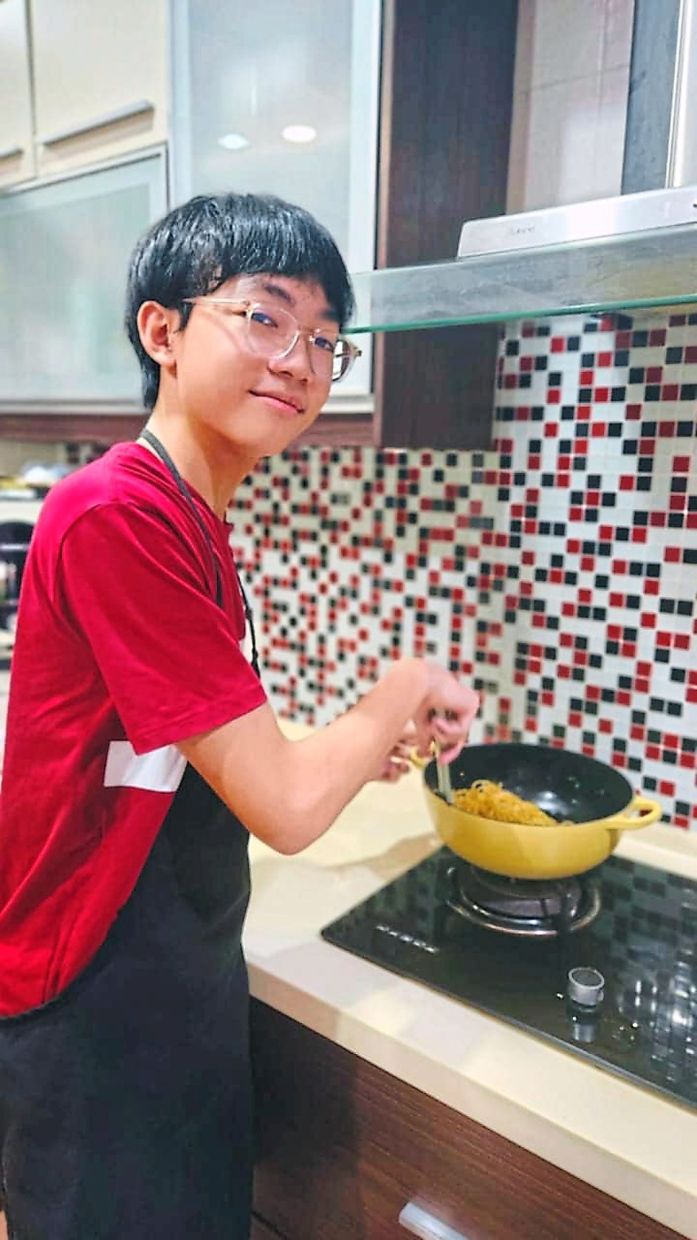MY love for food began with the dishes my grandmother made for our family.
I used to peek into the kitchen, watching her work her magic as she prepared delicious meals for us whenever we visited.
Her red wine chicken mee sua was one of my favourites – hearty and packed with rich flavours that warmed my soul.
However, as time passed, she began to cook less frequently due to old age. Sometimes, the taste wasn’t quite the same, and it felt disheartening that none of us could recreate her mee sua, even though we had eaten it for many years.
So, I decided to learn her recipe – one that holds many cherished memories for my family.
To me, the culinary traditions passed down from my grandmother and family are priceless treasures. They preserve our heritage and allow us to continue enjoying meals that could otherwise be lost to time.
What really started me on my cooking journey, however, was the Covid-19 pandemic, when we were all stuck at home during the movement control order. I read an interesting cookbook that inspired me to take cooking seriously.
Subsequently, watching tutorials and following recipes online helped me learn to cook a variety of meals, progressing from simple to more complex dishes.
To help me keep track of my favourite meals so I don’t always have to search for them online, I have made it a habit to write down recipes in a notebook.
Making mistakes is part of the learning process. When I first started out, I used to mess up recipes, accidentally cut my fingers or scald my hands with boiling water. The important thing is to keep learning and improving.
I have improved in terms of reaction speed and timing, such as knowing when to cut the vegetables and when to add the ingredients to the pot.
I also learnt that patience is key in cooking, because you need to know when to wait and when to act.
These days, I can whip up both Asian and Western dishes.
One of the cooking tips I have picked up is to always choose the freshest ingredients to improve the quality of the dish.
I also learnt not to judge an ingredient by how it looks – sometimes, an ugly-looking potato is still perfectly good!
Another important lesson was learning how to handle fire. Before I started cooking, I didn’t know how to control the kitchen stove. Now, it’s second nature.
I usually cook for my family of four during my free time, or about three times a week – the same frequency I would recommend for those starting out. Sometimes, I experiment with new recipes to test my cooking skills.
Teaching myself how to cook was the easy part – making the food taste good was the real challenge. It took me countless tries and many lessons from my relatives to bring my cooking to an above-average level.
Learning from my parents and grandparents is something I really enjoy, as it gives me the chance to spend quality time with them while preserving family recipes.
I have noticed that many young adults and teenagers prefer dining out rather than cooking at home. Cooking is often overlooked because many are too busy or find it inconvenient to buy ingredients and clean up after cooking.
But as teenagers, we should learn how to cook, especially since going to university or living alone will eventually require it.
Cooking helps us prepare affordable meals at home or in dorms. Eating out can be expensive, especially for students with limited savings.
Restaurant portions are often small and costly, while at home, you can cook larger portions for a much lower price.
You will notice the difference between eating out and cooking at home – not just in price and portion size, but also in taste and nutrition.
Eating out often tastes better because restaurants may use flavour enhancers like monosodium glutamate or add extra sugar and seasoning. But it is important to think about what we are putting into our bodies.
Cooking at home is usually healthier since you control how much salt or sugar goes into your food.
For me, stepping into the kitchen is a way to continue my family’s cooking traditions and create dishes that bring joy to friends and loved ones.
Cooking may not be easy at first – it requires self- discipline, and ingredients and cookware can be costly.
But with a bit of effort, time, and resource planning, anyone can do it.
Ryan, 17, a student in Selangor, is a participant of the BRATs Young Journalist Programme run by The Star’s Newspaper-in-Education (Star-NiE) team. For updates on the BRATs programme, go to facebook.com/niebrats.
With the theme of the article in mind, carry out the following English language activities.
1 In pairs, tell each other about a family dish or comfort food you love. Describe what the dish is, why it is special to you, and how it is cooked (basic steps).
2 Plan a healthy dish and present it to your friend. After listening, your friend will rate how healthy they think the dish is and explain why. Have fun!
The Star’s Newspaper-in-Education (Star-NiE) programme promotes English language learning in primary and secondary schools nationwide. For Star-NiE enquiries, email starnie@thestar.com.my.









